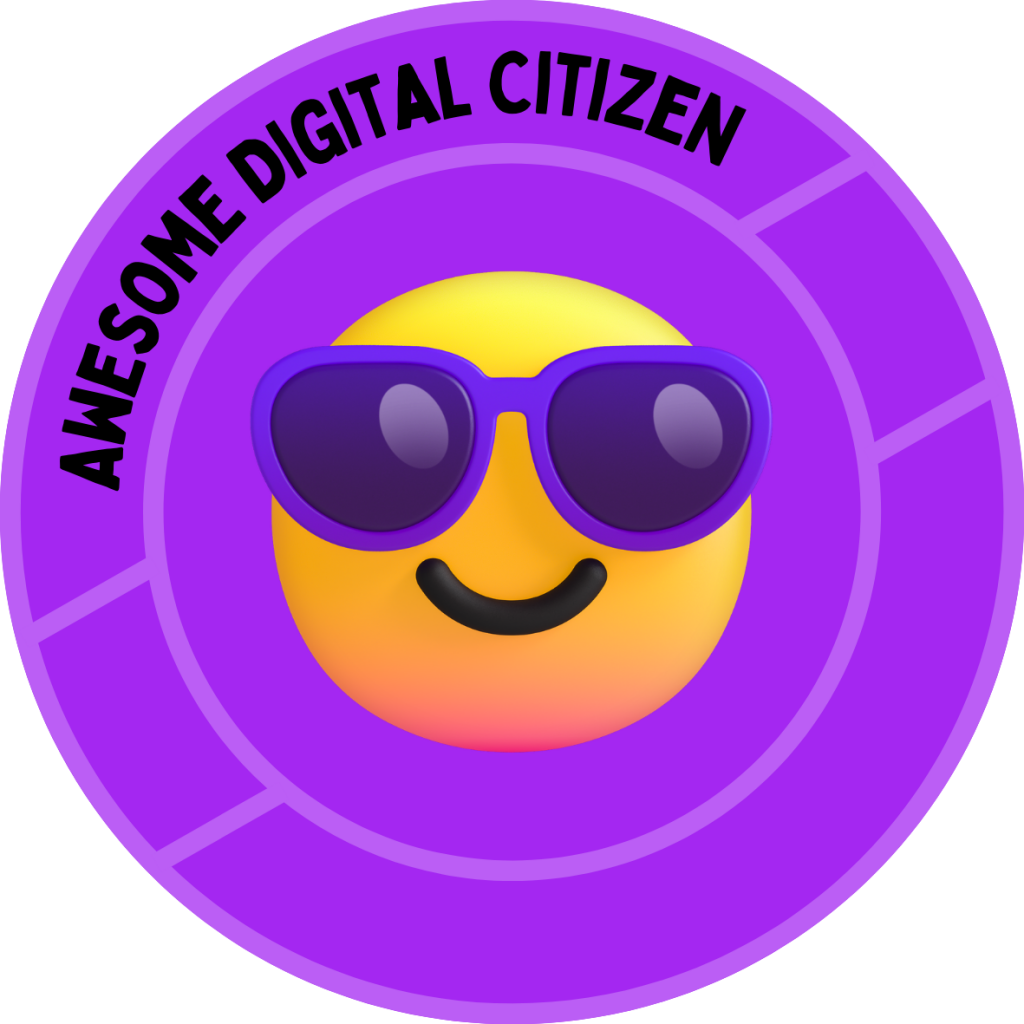
When thinking about digital citizenship, I view Ribble’s nine elements of digital citizenship as any other social system or social norms. Let’s take health care as my example; all nine factors like access, commerce, equity, fluency, collaboration, law, welfare, rights and privacy also operate within a health care system. So for me, I like to approach digital citizenship and technology in today’s society as a kind of social system/ norm we need to address (because it is). Young people are on their screens and experiencing the digital world every day, just like they experience physical, mental, emotional and spiritual health every day by existing in their bodies. I know this comparison feels like a stretch, but please stay with me! For our health, we are taught, and we perform certain practices every day like, maintaining proper hygiene, eating nutritious meals, practicing meditation or practicing a religion. So, why do we not treat our digital experience the same? Why have we not implemented safe practices to maintain healthy digital experiences and practices, like we do to maintain a healthy body?
In analyzing the Saskatchewan Curriculum, I found a few outcomes and indicators that touch on or at least have the space for digital literacy teachings:
- The Social Studies curriculums (also some of SK’s oldest curriculum documents) state, “Technological Literacy will help students appreciate that technological systems are integral to social systems and cannot be separated from the culture within which they are shaped.” For being written in 1992 and included in the “core curricula,” understanding is very good. Still, I do not think anyone could predict the scope we are at with technological literacy a mere 30 years later. It also touches on “Resource-Based Learning” but only the benefits of obtaining and using resources – nothing about “fake news” and being responsible digital citizens when seeking resources. Nothing about not believing everything you read and such, but relatively that wouldn’t have been as serious of an issue then since the majority of resources were still primarily from print media.
- From Ribble’s nine elements of digital citizenship, I believe there is space in this curricula to talk about all of the nine elements, specifically Digital Access, Digital Commerce and Digital Rights and Responsibilities.
- English B10 (CR B10.2) “View, interpret, and report on ideas and information from more than one source to develop and support positions on various topics related to the course, including identity, social responsibility, and personal agency.” Indicator F “Recognize persuasive techniques (including propaganda) being used in visual and multimedia texts, and analyze and assess the impact of specific media, techniques, and designs.”
- I like a lot of things about this outcome and indicator F specifically. I believe the scope is broad enough for student exploration but specific enough that teaching digital literacy is inherent to this outcome.
- I believe students can learn a lot about digital literacy and digital citizenship from exploring credible sources and deciphering why propaganda is harmful.
- Digital fluency and Digital Law would be the focus of this outcome/indicators as defined by Ribble’s nine elements of digital citizenship.
- Health 6 USC6.1 “Analyze the factors that influence the development of personal standards and identity, and determine the impact on healthy decision making (including cultural norms, societal norms, family values, peer pressures, mass media, traditional knowledge, white privilege, legacy of colonization, and heterosexual privilege).”
- The indicators let me down with this one. Maybe there is space here, though, with healthy decision-making to incorporate teachings of digital literacy.
- Health 5 Outcome USC5.4 Indicator K Identify misunderstandings and/or misconceptions related to messages in the media that may misinform the public about identities (e.g., portrayal of violence, ethnic, gender, and racial bias).
- This is the only mention of media in this whole unit of confidence and healthy decision-making. I believe this doesn’t seem right because media is now shaping young people’s perceptions and identities with filters, photo editing, and all those unrealistic beauty standards. Students need to hear social profiles do not define their self-worth.
- In the middle years’ Health curriculums (these outcomes/indicators specifically), I would focus on Digitial Health and Wellness and Digital Etiquette from Ribble’s nine elements of digital citizenship.
Whatever grades I end up teaching in my future classroom, I will integrate digital citizenship learnings by starting with having open and honest conversations, discussions about online safety and prompt critical thinking around why being digitally literate are essential to our well-being. I will treat digital citizenship as an ever-changing, evolving social norm that consistently needs to be addressed and explain that to my students. I imagine carrying out activities that identify how media influences us, the good, the bad and the ugly. I will teach responsible decision-making and make clear that our online footprint is apparent. I do not want to scare my students away from the internet like the old methods we observed in #edtc300 do by trying to veer kids away from posting online because the truth is they already are and/or are going to. I believe a big part of digital literacy is simply awareness and making students aware of media and its mark. I would use real-life stories and examples like the Amanda Todd case or even the Toronto van attack case back in 2018 that involved a misogynistic social media group. Overall, I want to be proactive over reactive when teaching the impacts and glories of the internet.
Some further resources I explored: